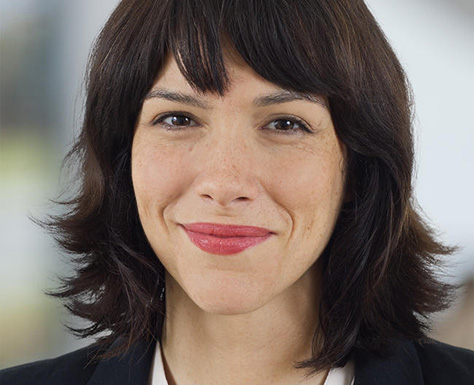Leah’s Upcoming Workshop at UX STRAT
Paul: You’re also conducting a workshop at this year’s UX STRAT USA. What’s it about?
Leah: I’m so excited about this workshop. It’s called “How to Speak Strategy.” The idea for this workshop started in an unlikely place. People often ask me, “How do I make the case for experience design?” For a long time, my advice was basically to construct a chain of evidence on the value of design. But, eventually, I began to think that, if you’re trying to construct an argument for why design is important, you’ve probably already lost. Here’s why: most impassioned arguments for design frame it as an effective problem-solving tool, giving all the supporting reasons we know and love—for example, because it helps you understand customer needs better, helps you save money, and helps you drive earnings. But who really cares about the problem-solving tool if they aren’t deeply convinced of the problem?
So the paradox at the heart of this workshop is this: to get people to care about experience design, don’t talk about experience design. Talk about strategy. Only if you can define the problems companies need to solve relating to market forces, competitive dynamics, and weaknesses in durable advantage will your audience grow interested in why design is an apt solution. (And they’ll be eager to know how you plan to apply it.)
In my experience, though, many design leaders are unfamiliar with the language and frameworks of strategy. So the intent of this workshop is to help with that. The particular structure for the workshop is inspired by the fact that so much corporate dialogue happens through a very particular and strange artifact: the presentation deck. This question anchors the workshop: what does a persuasive deck look like for a design leader who needs to gain the alignment of his or her peers in other disciplines? Or, more simply, what makes a good persuasion deck for design strategy? Over the course of the day, we’ll dig into the elements of effective strategic communication, look at examples of what works and what doesn’t, and work on real-life persuasion decks that attendees can base on their current work.
Adoption of UX Strategy
Paul: You’ve been focusing on business strategy and experience design for a few years now. Where do you think this combined field of interest that is UX strategy, which is the primary focus of UX STRAT events, is headed? In your opinion, where are we now and what’s next?
Leah: There’s a lot of talk of about how these fields are interconnected—and some promising signals like MBA programs that are adding design-thinking curricula. But there are still precious few organizations that really commingle experience design with business strategy. In most organizations, experience design is still downstream.
What will really force these two disciplines into the same conversation more broadly is agility. Probably one of the strongest voices for the relationship between strategy and design right now is coming from management consultancies. Old guard firms like McKinsey and BCG are setting up new labs and studios to enable a more agile, human-centered, test-and-learn approach to business strategy.
Eventually, the assemblage of management consultants that advise senior leaders will amass in a resounding chorus, and the message will start to sink into corporate Strategy departments more broadly. But until then, companies will continue to look at firms that differentiate through experience design and wonder how they did it, trying to keep up by copying features and functions, while utterly skipping over the insight-focused research and strategy that lie at the core of experience design.
Research on UX Strategy Trends
Paul: You’ve been conducting research on this topic for a while now. Can you tell us about your research? How can readers help?
Leah: Research is such a fancy term for what I’ve been doing. Other descriptions for what I do: keeping tabs on things, managing a fat Evernote account, mining for examples of goodness. But if you want to get specific about it, I employ a blend of research methods—from qualitative interviews to quantitative studies and secondary-source research—to understand trends, best practices, and notable case studies across the fields that collectively make up the broader category of experience design—User Experience, Customer Experience (CX), service design, and design thinking.
I did much of my past research while at Forrester, and it’s available in reports on Forrester.com. A few of these Forrester reports are available online as a free courtesy from TandemSeven—for example, “How to Modernize User Experience” and “User Experience Capabilities Assessment.” In my post-Forrester life, I continue to conduct research in this vein. In some cases, I do this research on behalf of clients; when I do my own research, I’ll make it freely available online.
My most recent research project has focused on trends in User Experience. This is the discipline I cut my teeth on, so I remain very interested in how organizations conceive of User Experience, how they staff and budget for it, how they create operational conditions that enable—or thwart—it, and the benefits they see from it. I recently fielded a survey on the “The State of User Experience 2016” to gather data to answer many of those questions. Look for my analysis of that research—which I’ll publish on Medium and my Web site—in the coming month.
If anyone is in an organization that’s doing great experience design work and would like to share, I’m always looking for new people to connect with and learn from.
Learnings from Leah’s Forrester Experience
Paul: You previously spent some time as a Forrester analyst. What did you experience there? What are some takeaways from your time there?
Leah: I learned so much at Forrester. Where to begin? I learned:
- Customer experience and user experience are kissing cousins, but they are not the same thing. (For more on that, check out “Bridging the CX/UX Divide.”
- No one group or discipline owns the notion of experience design—and when it does become a turf war, that’s a red flag.
- The field of User Experience tends to be too weak on measurement, and the field of Customer Experience tends to be too weak on design.
- Insightful, rigorous qualitative research becomes that much more powerful when it is combined with quantitative data. I learned to love quantitative data.
- Corporate design-thinking programs are multiplying like bunny rabbits. They must be handled carefully because they can become either a great marketing tool for investing more in a company’s experience design capabilities or an excuse for not investing in a serious experience design program. It depends.
- There’s still a lot of confusion in North America about service design.
- People are generous with their stories and often willing to divulge what they’ve learned to further the advancement of the experience design field.
- Always write—and speak—to convey a message that’s crafted for the smartest person in the room.
- Be vigilant about avoiding using circular logic in arguments. Tautologies—whether verbal or written—are the hallmark of weak arguments.
- Know how to speak the language of strategy. (As I mentioned earlier, my UX STRAT workshop is on this important topic.)
- Write in the active voice—though I still slip up sometimes.
- While it’s been important to examine our field from an outside perspective, and it’s critical to understand the range of associated disciplines that are working together—and sometimes churning—inside organizations in pursuit of better experience design, ultimately, experience design people are my people. For me, personally, the further I work from these people, the less meaningful my work feels.
If you can’t tell already, all of the many things I learned while at Forrester—and the ways in which I personally processed them—have directly informed both my talk and my workshop for UX STRAT.
Leah’s Current Work
Paul: More recently, you’ve struck out on your own to do consulting. What kinds of clients or projects are you most interested in?
Leah: You know how Simon Sinek says you have to start with why?
Well, I realized that the fundamental why at the heart of my career has really always been confidence. From writing The User Experience Team of One through my most recent work, I’ve essentially been exploring how to bring confidence and authority and a sense of leadership to the work of experience design. The focus of the User Experience Team of One was very much on the confidence of the individual practitioner. More recently, I’ve become interested in the confidence of design leaders—and even whole organizations—in their pursuit of experience design. That latter category is what my consulting is focusing on.
So what does that look like in practice?
I work with organizations to assess the maturity of their experience design operations, support their strategy and planning efforts, and provide training and coaching for their teams to improve specific skills that are fundamental to experience design. A big part of my approach is employing the analyst’s mindset and methods—applying industry-wide research and examining outside data and case studies—to help design-focused leaders make informed decisions and institute proven best practices for experience design.
If you’re curious, there’s more information on my Web site, Leah Buley Co.
An Invitation to UXmatters Readers
Paul: What closing thoughts would you like to leave us with?
Leah: I hope UXmatters readers can join us at UX STRAT in Providence, Rhode Island, in September. I think it’s going to be a great program.
Paul: Thanks, Leah. I’m very much looking forward to hearing you speak at UX STRAT, and I also want to invite UXmatters readers to join us in Providence from September 14–16. It’s a wonderful town, and the Biltmore Hotel is the perfect venue for this event. To take advantage of early bird pricing, register by July 31, 2016. 

